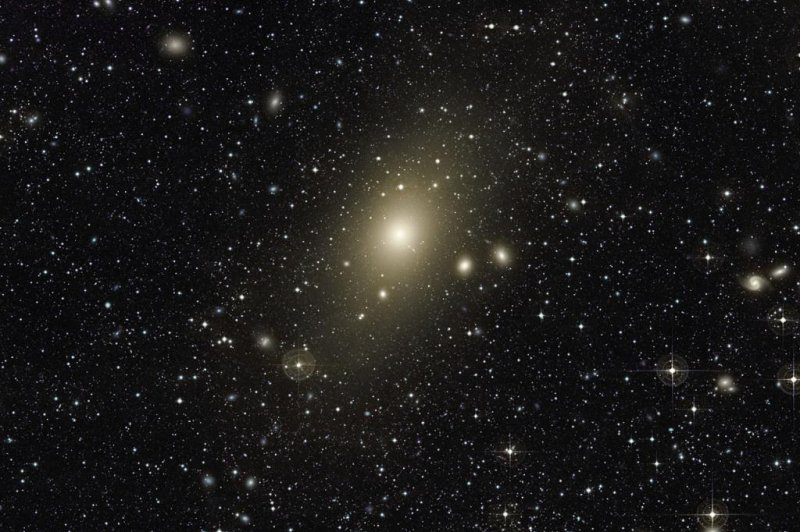The giant elliptical galaxy Messier 87 seen surrounded by a halo -- content and satiated after swallowing a nearby medium-sized galaxy. Photo by ESO/VLT
GARCHING, Germany, June 25 (UPI) -- For the first time, astronomers have located direct evidence of a galaxy with a belly full of another galaxy's stars.
With the help of the European Southern Observatory's Very Large Telescope, a team of astronomers have located proof of galactic cannibalism -- proof that one galaxy just ate another galaxy.
Scientists have taken it as a matter of fact that larger galaxies regularly absorb smaller galaxies; that's how they grow. But finding direct evidence has proven difficult. The search might be likened to looking for a cup of water that was thrown into a pond a couple years ago.
But while the water itself may be hard to come by, researchers have now shown they can locate the equivalent of ripples and disturbances in the pond -- the after effects of accretion.
That's what researchers have done in their analysis of the nearby giant elliptical galaxy Messier 87.
Scientists used powerful spectrography instruments to study the movement of planetary nebulae, the luminous shells surrounding aging stars. The data revealed a "recent" impact, within the last billion years.
"We are witnessing a single recent accretion event where a medium-sized galaxy fell through the center of Messier 87," Ortwin Gerhard, a researcher at the Max Planck Institute, explained in a press release, "and as a consequence of the enormous gravitational tidal forces, its stars are now scattered over a region that is 100 times larger than the original galaxy!"
Gerhard is the co-author of a new study on Messier 87's appetite for nearby galaxies. The paper was published in the journal Astronomy and Astrophysics.
In studying the signs of disruption, scientists are also able to locate recently acquired stars -- younger, brighter, bluer stars, likely the progeny of a star-forming spiral galaxy.
"It is very exciting to be able to identify stars that have been scattered around hundreds of thousands of light-years in the halo of this galaxy -- but still to be able to see from their velocities that they belong to a common structure," added co-author Magda Arnaboldi. "The green planetary nebulae are the needles in a haystack of golden stars. But these rare needles hold the clues to what happened to the stars."















